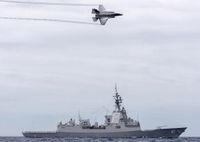As Australia gears up for its federal election on May 3, 2025, South Australia is emerging as a focal point in the political landscape, particularly in the context of two critical battleground seats: Boothby and Sturt. These electorates, characterized by their marginal status, are pivotal for both the ruling Labor Party and the opposition Liberals, as they seek to secure a significant foothold in the upcoming election.
Currently, Boothby is held by Labor's Louise Miller-Frost with a margin of 3.3%, while Sturt is narrowly controlled by Liberal MP James Stevens, boasting a mere 0.5% margin. The stakes are high, as both seats could potentially sway the balance of power in the Australian Parliament.
Prime Minister Anthony Albanese and Opposition Leader Peter Dutton have made only fleeting visits to South Australia since the official campaign began four weeks ago, a trend that has left some locals questioning the urgency of the upcoming election. This indifference is compounded by the absence of campaign signage on the state's Stobie poles, which were banned from displaying corflutes last year. Despite this, the two leaders have focused their efforts on Boothby, a seat that had long been a Liberal stronghold until it shifted to Labor in 2022.
Miller-Frost faces a formidable challenge from former Liberal MP Nicolle Flint, who is leveraging her established name recognition to reclaim the seat. The Liberals are optimistic about their chances, believing that Flint's previous incumbency provides her with an advantage in the race. Conversely, Labor argues that Dutton's leadership may undermine Flint's campaign efforts.
In Sturt, the competition is more diverse, with Stevens being challenged by Labor's Claire Clutterham and teal independent Dr. Verity Cooper. Clutterham's candidacy is buoyed by Labor's recent successes, including a victory in the Dunstan state by-election, which overlaps with Sturt's boundaries. The Greens are also optimistic, having gained a 5.2% swing in the 2022 election, which could complicate the dynamics for the major parties.
As the election approaches, six Senate spots are also up for grabs in South Australia, adding another layer of complexity to the electoral landscape. Notable candidates include long-time Greens senator Sarah Hanson-Young, Liberal Alex Antic, and Labor's Marielle Smith. Shadow health minister Anne Ruston, who has faced internal party strife, has been relegated to second place on the Liberal Senate ticket, while One Nation's Jennifer Game and former senator Rex Patrick, running under the Jacqui Lambie Network, are also in the mix.
Labor's stronghold in the South Australian Parliament, coupled with Premier Peter Malinauskas's popularity, particularly following the successful AFL Gather Round event, positions the party favorably as it seeks to defend its seats. Malinauskas has been a prominent figure in Labor's campaign efforts, often appearing alongside Albanese at press conferences.
However, the Liberal Party's recent turmoil, including the conviction of former leader David Speirs on drug charges and losses in recent by-elections, has cast a shadow over their campaign in South Australia. Despite attempts to shift focus to pressing issues like cost of living and energy, the damage to the party's brand may linger.
As the election date nears, polls indicate a tight race, particularly in Boothby and Sturt, which could prove decisive in determining which party will lead the country. Although South Australia may not dominate the national conversation, its electoral outcomes will undoubtedly influence the broader political narrative.
Beyond the local dynamics, the 2025 federal election is set against a backdrop of pressing national challenges, including rising living costs, housing affordability, healthcare access, and climate policy. Nine News has committed to providing comprehensive coverage of these issues, with prominent political figures such as Sarah Abo and Karl Stefanovic leading the charge from both party camps.
In a broader context, Australian defence policy is also a significant topic of discussion leading up to the election. The Australian Strategic Policy Institute (ASPI) is set to release a report titled "Agenda for Change 2025: Preparedness and Resilience in an Uncertain World," which will delve into the strategic importance of Australia's defence capabilities amidst rising tensions, particularly concerning China. The report emphasizes the need for Australia to bolster its defence workforce, enhance munitions production, and invest in autonomous systems to ensure readiness for potential conflict.
As the election approaches, the Australian Defence Force (ADF) faces scrutiny over its preparedness to deter aggression and engage in future conflicts. With China’s military capabilities expanding rapidly, the ADF's focus must remain on deterrence and readiness, ensuring that Australia can effectively support its allies while safeguarding its national interests.
In the wake of the election, the incoming government will need to address critical defence strategies, including the release of the National Defence Strategy (NDS) and Integrated Investment Program (IIP) in 2026. With the ADF's personnel numbers currently at 57,346 active duty and 32,049 reserve members, recruitment and retention remain pressing challenges that must be prioritized.
As the countdown to the election continues, the interplay between local electoral battles and broader national issues will undoubtedly shape the future of Australia. Whether voters prioritize local representation in Boothby and Sturt or the overarching concerns of defence and economic policy remains to be seen, but one thing is clear: the stakes have never been higher.

